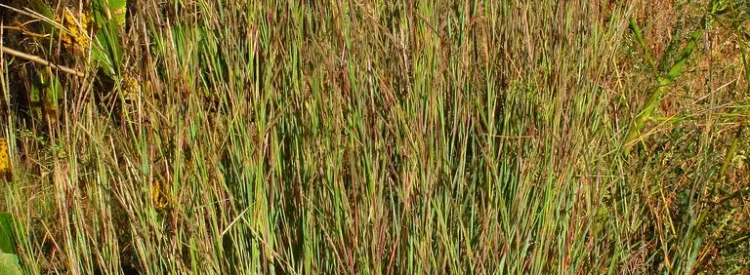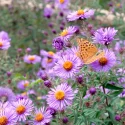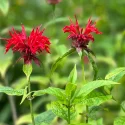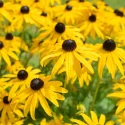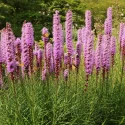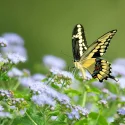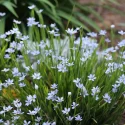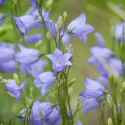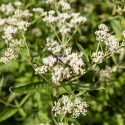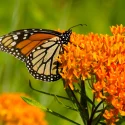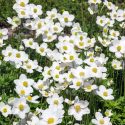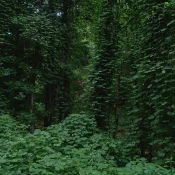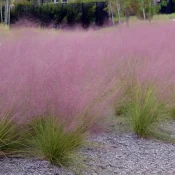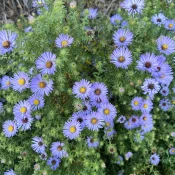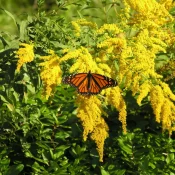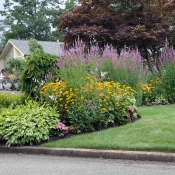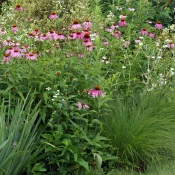Grasses are NOT boring. Little Bluestem is a cinematic plant: its colors change with the seasons, giving dramatic shifts in hue, shape, and texture. In the spring and summer, the grass is blue-green near its roots (giving it its name.) Watch it turn into a regal bronze in the fall, waving tufted seed heads that feed songbirds. Little Bluestem is native to every continental state except California, Nevada, Oregon, and Washington.
If you’re looking for a low-maintenance and drought-tolerant grass that looks gorgeous throughout the year, look no further than the native plant Little Bluestem (Schizachyrium scoparium). This grass is not only easy to grow, but it also provides a number of ecological benefits that make it a great addition to any yard.
Why it’s important to plant native
Native plants like Little Bluestem are important for many reasons, including:
- Native plants are the preferred food and homes for bugs, birds, and animals; without native plants, we would not have the butterflies and songbirds we all love
- Native plants are built to thrive in their home areas; they have thousands of years of experience living through every drought, hurricane, blizzard, and storm
- Finally, native plants let you be a lazy gardener! After the first year of getting established, native plants are happy with just rain.
New to native?
Before lawns and landscaping, native plants were here. They’ve fed birds, bees, and butterflies for thousands of years—and they’ll do the same in your yard. The best part? They’re easier to grow than you think.
Native plants also have lots of history to share. The Lakota people used Little Bluestem grass as insulation for their homes and shoes, by rubbing the stems together until they created a fur-like material. What a magical plant!
Let’s keep exploring the benefits and beauty of Little Bluestem, starting with its seasonal changes.
Little Bluestem throughout the seasons
Whoever said planting with grasses was “boring” never met little bluestem. Little Bluestems’ bluish-green shoots emerge in the spring, looking electrified in gardens. They become tall and regal as the summer progresses, dancing along with the wind.
Little Bluestem delivers four seasons of beauty:
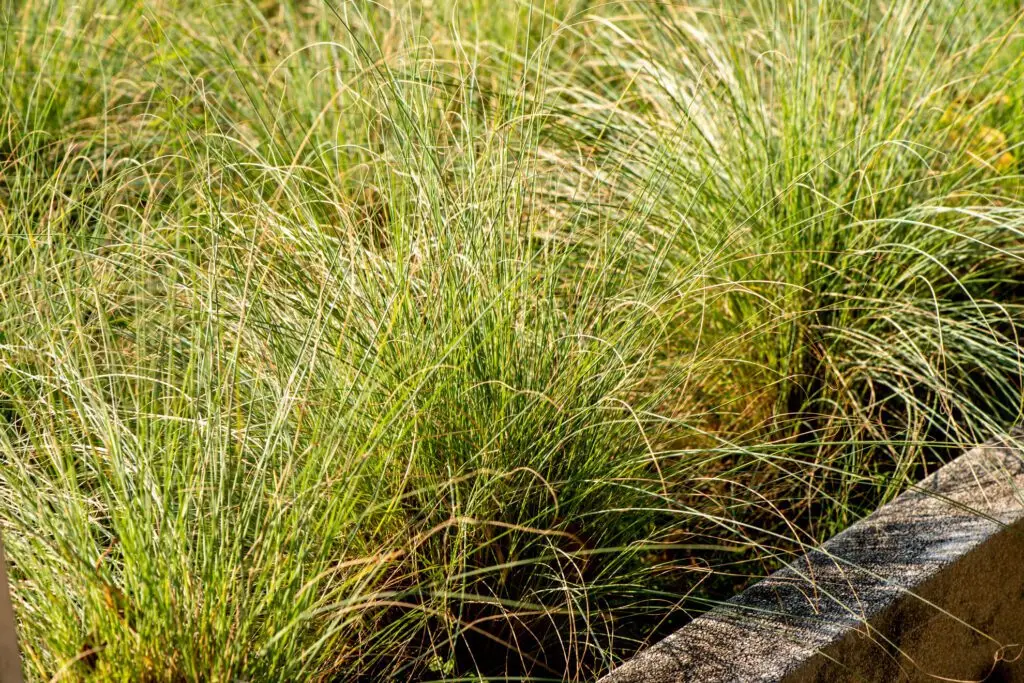
Little bluestem in the summer
Little Bluestem brings a tall, majestic jolt of green to any summer garden. Grasses look fantastic, especially when paired with other native plants with different textures and colors, like Coneflower, Rattlesnake Master, and Blazing Star.
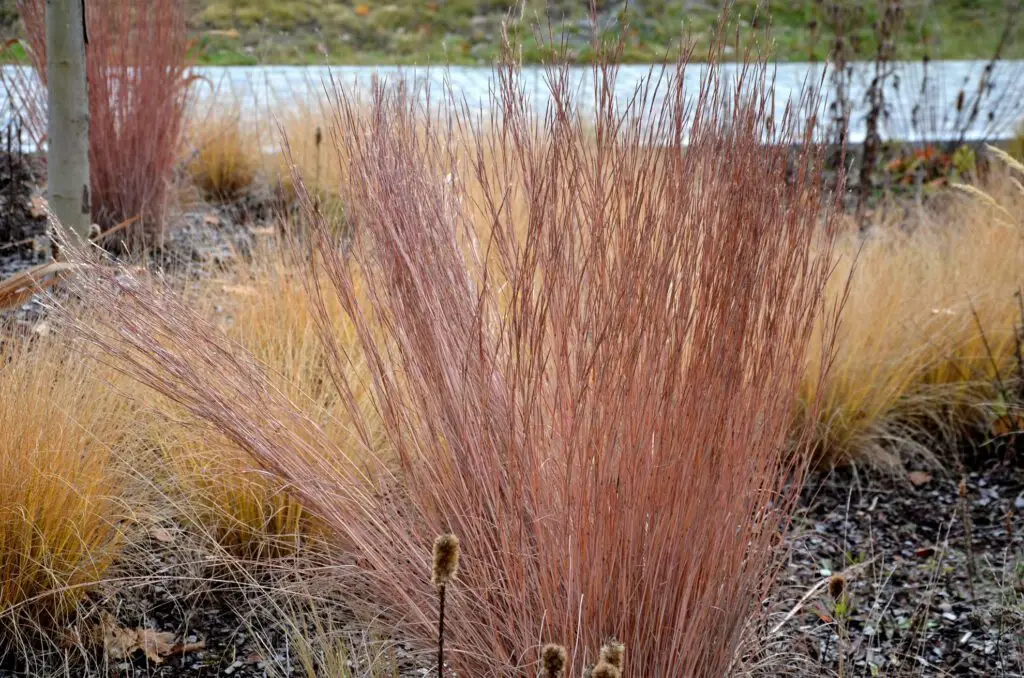
Little bluestem in the fall
In the fall, Little Bluestem turns a beautiful reddish color. Its tips are covered in white tufted seed heads—perfect for small songbirds to snack on.
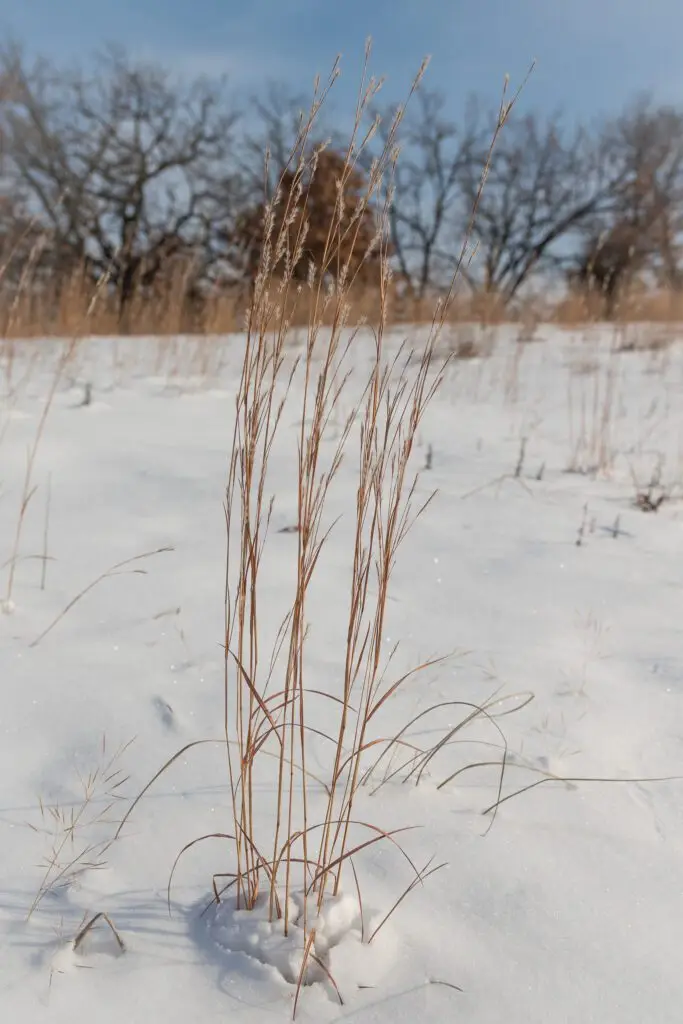
Little bluestem in the winter
The warm, welcoming bronze hue continues through the winter, even when plants may stick out of snowbanks. Its airy, feathery seed heads provide food for wildlife throughout the colder months.
How to grow Little Bluestem
Little Bluestem loves sun and part sun. This environment helps match its original habitat, found in much of the Great Plains.
Little Bluestem is a popular choice for natural landscaping, meadows, and prairie restorations, as well as for erosion control and as a component of wildflower and native grass seed mixtures.
Little bluestem is very drought tolerant
Worried about keeping plants alive while you’re on summer vacation? Little Bluestem is for you. It can withstand prolonged drought periods due to its long roots which stretch deep into the ground to reach water.
Grow Little Bluestem from plants
Little Bluestem can be planted from plants found in nurseries and neighbors. There are a few reliable ways to find Little Bluestem plants for your yard:
Where can I find seeds and plants?
Finding native plants can be challenging (we partly blame Marie Antoinette.) To make it easier, we’ve assembled four sourcing ideas.
300+ native nurseries make finding one a breeze
Explore 100+ native-friendly eCommerce sites
Every state and province has a native plant society; find yours
Online Communities
Local Facebook groups are a great plant source
Grow Little Bluestem from seed
It is challenging to grow little bluestem from seed. According to the University of Maryland Center for Environmental Science, “Germination rate can be low and rate of establishment is slow, typically requiring > 2 years. Once established, however, it is a superior performer.”
Types of little bluestem
There are many types of Little Bluestem! Some are native plants and some are cultivars (sometimes also called nativars.)
Native Little Bluestem
While there are many Little Bluestem cultivars (find them below), there is only one true native variety of this plant. You will know it’s a native version when there is only a Latin name describing the plant. When you see the Latin name + a name in ‘single quotes’ — that’s the sign of a cultivar.
Little Bluestem cultivars
Dozens of cultivars offer almost every color of the rainbow. Many cultivars have been selected to thrive in areas besides the midwest.
2022 Plant of the Year
Little Bluestem (and its family of cultivars) were crowned Perennial Plant of the Year by the Nursery Growers Association in 2022.
- “Standing Ovation” – a compact cultivar with blue-green foliage that turns orange-red in fall. The seed heads are held upright, creating a bold silhouette.
- “Jazz” – a compact cultivar with blue-green foliage that turns deep red in the fall. It was cultivated to be short enough to not flop over.
- “Prairie Blues” – a medium-sized cultivar with blue-green foliage that turns orange-red in the fall. The seed heads are held above the foliage, creating a delicate texture.
What to plant with Little Bluestem
Little Bluestem looks amazing next to other native plants that love sun. Grasses are excellent companions in garden design—their thin reeds create contrast against other leaves, allowing each of the different shapes to shine. Excellent companions include Coneflower, Rattlesnake Master, Milkweed, and Blazing Star.
What if your feed was actually good for your mental health?
Give your algorithm a breath of fresh air and follow us.
